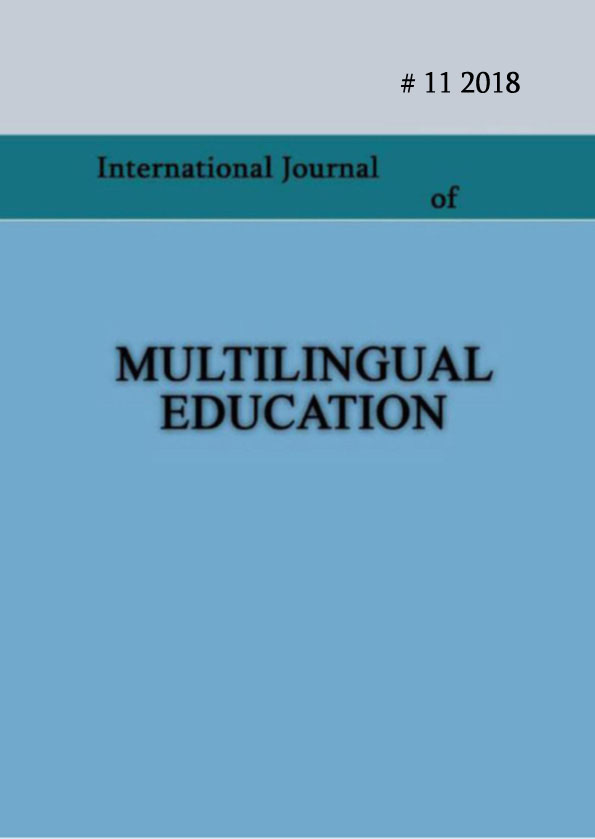Teaching Verb Person Relation to Non-Georgian Speakers
Keywords:
Communication, method, phrases, person, combinationAbstract
At the initial stage of language learning, when all the attention is focused on the use of phrases for communication, a particular approach is needed in order to solve one problem: what dosage of theoretical material of grammar is recommended for learners to be provided with? The issue can’t be resolved unilaterally without considering various circumstances. It’s necessary to take into consideration subjective and objective circumstances. Namely, the category of language learner (level of language knowledge, duration of learning process…) and motivation to learn the language. In all cases we believe that the initial stage should be directed towards strengthening the competence of communication, more specifically, grammatical material should be provided with the dose required for practical communication. This can be reflected by ready-to-use communicational phrases, exercises, schemes…
One of the difficult problems that affect the language teaching process for non-Georgian speakers is the fact of understanding and realizing various forms of the Georgian verb, especially the ones that show person relation, person combinations, etc. and using them in communication. As a result of polypersonalism of the Georgian verb, it’s difficult for a non-Georgian speaker who is used to using a completely different system of language to perceive grammatical persons indicated in the Georgian verb, to use them in the form of verbal expressions and to express their thoughts in the right way. For example, the language learner may say: “Tsigni megobartan gaugzavnet, tu sheidzleba!” instead of the proposal: “tsigni megobars gaugzavnet, tu sheidzleba!” (send the book to a friend). In this sentence the person relation is expressed by the word with -tan suffix, which is characteristic to languages having different systems (Turkish, English…).
What method should we use in order to make the beginner language learner better understand verb person relation? We think that the verbs that are related to persons should be selected by means of active forms, necessary for simple communication, such as: gaketeba (to make) (vuketeb (I am making it to him/her) – miketebs (He is making it to me)…), darekva (to call) (girekav (I’m calling you) – mirekav (you’re calling me)…). Futhermore, we can introduce the verbs of expressing hither- thither orientation: mitsera-motsera (write to him – write back to me) (vtser – mtsers...) (I write to him – he writes back), mitsema-motsema (give it – give it back) (vadzlev – madzlevs...) (I give it to him – he gives it back )... as well as: “speech of circle“ velaparakebi – melaparakeba (I talk to him
– he talks to me), veubnebi – meubneba (I say it to him – he says it to me)... with auxuliary verbs mikvarkhar (I love you), vukvarvar (He loves me)... These verbs should only be provided to the learner at the present time, by means of phrases.
After studying the main tenses of the verb, we can introduce the table of verb person combination of active usage, including three basic tenses. Thus, according to levels of language knowledge in language learning process, we provide learners with verbal and non-verbal means of the scheme of person combinations at first, then – ready-to-use phrases easy to perceive and memorize and later, at the last stage of the study, according to verb groups, we move to a systematic study, which involves studying different types of verbs expressing person relation by means of tables.
References
Jorbenadze B. (1983). Vowel prefix formation of the verb in Georgian, Tbilisi University Press.
Meliqishvili, D. (2014). Systemic morphosyntax analysis of Georgian verb. Tbilisi, Program “Lagos”. Shanidze A. (1980). Works, Tbilisi University Press.
Published
How to Cite
Issue
Section
License
Copyright (c) 2018 Rusudan Saginadze

This work is licensed under a Creative Commons Attribution-NonCommercial 4.0 International License.
Copyright (c) - Authors who publish with this journal agree to the following terms: Authors retain copyright and grant the journal the right of first publication with the work simultaneously licensed under a Creative Commons Attribution-Noncommercial 4.0 International License, which allows others to share the work with an acknowledgement of the work's authorship and initial publication in this journal. Authors are permitted and encouraged to post their work online (e.g., in institutional repositories or on their personal website) prior to and during the submission process, as it can lead to productive exchanges, as well as earlier and greater citation of published work (see The Effect of Open Access). Authors may enter into separate, additional contractual arrangements for the non-exclusive distribution of the journal's published version of the work (e.g., post it to a repository or publish it in a book), with an acknowledgement of its initial publication in this journal.

